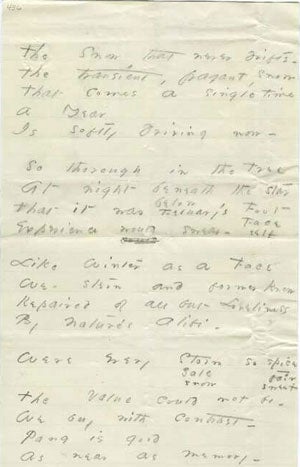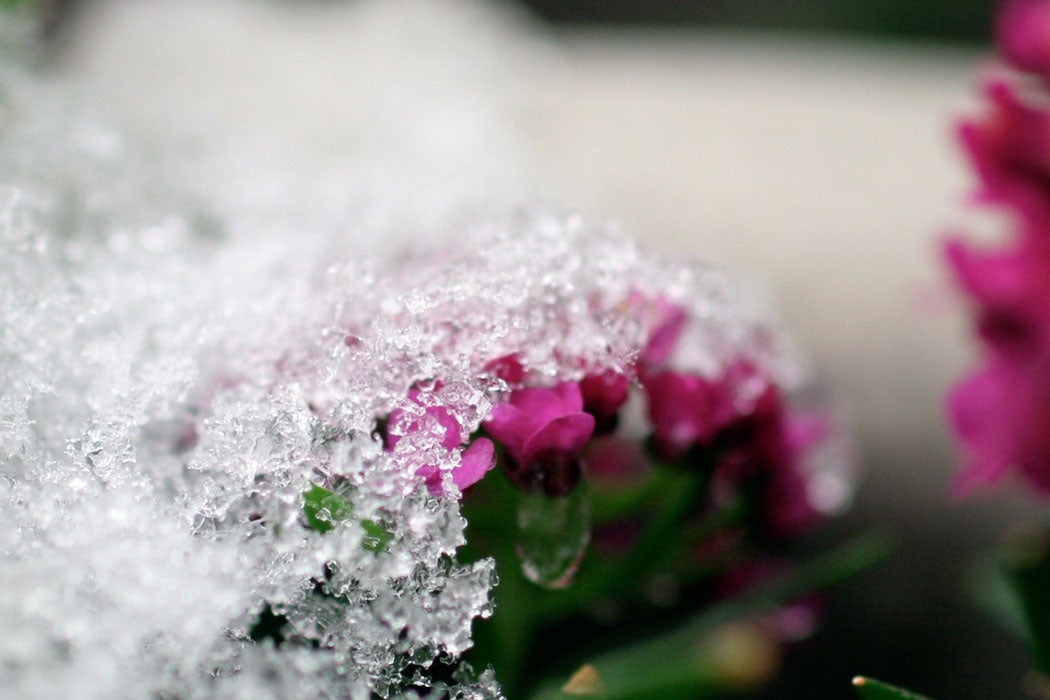As much of the country shivers in a seemingly endless freeze, our thoughts turn to the poetry of snow, especially that of Emily Dickinson, whose hometown of Amherst, Massachusetts lies buried under six feet of the white stuff.
Like many of her poems, “The Snow That Never Drifts” presents a riddle for the reader:

The Snow that never drifts —
The transient, fragrant snow
That comes a single time a Year
Is softly driving now —
So thorough in the Tree
At night beneath the star
That it was February’s Foot
Experience would swear —
Like Winter as a Face
We stern and former knew
Repaired of all but Loneliness
By Nature’s Alibi —
Were every storm so spice
The Value could not be —
We buy with contrast — Pang is good
As near as memory —
(—”The Snow That Never Drifts”)
What sort of weird, oxymoronic snow is this, you may wonder: “fragrant” snow that drives, yet “never drifts”?
In his essay “The Snow That Never Drifts: Dickinson’s Slant of Language“, Martin Bickman points out there there is always an “‘a-ha’ recognition” for readers when they discover the poem’s traditional interpretation, that the poem is not really about winter after all. “Fragrant snow” is thought by critics and scholars to be a metaphor for the white petal blossoms of late spring.
But, asks Bickman, isn’t there more to this poem than a simple de-riddling of its scenery? “One wonders how a poem that contains the words ‘snow’, ‘drifts’, ‘February’, ‘winter’, and ‘storm’ can actually not be about snow at all, not evoke some frosty resonances.”
It is more helpful, Bickman argues, to view the poem as less about winter or spring as about “the perceptual, linguistic, and emotional relations between them, especially as these are made explicit concerns in the last stanza, which suggests that the entire poem is “a meditation on analogy-making itself, a meta-statement about metaphor.”
“The Snow That Never Drifts” is more than “a mere riddle, a twist of wit and fancy,” writes Bickman. The only way to make sense of this poem is to view it as neither about snow nor petals but as a relational concept.
“The similarities in nature parallel—or perhaps create—congruent dynamics in the mind; consciousness is never fully in the moment of perception—it is in the past, the future, the memory, the imagination, the gaps and connections between the now and the then.”







